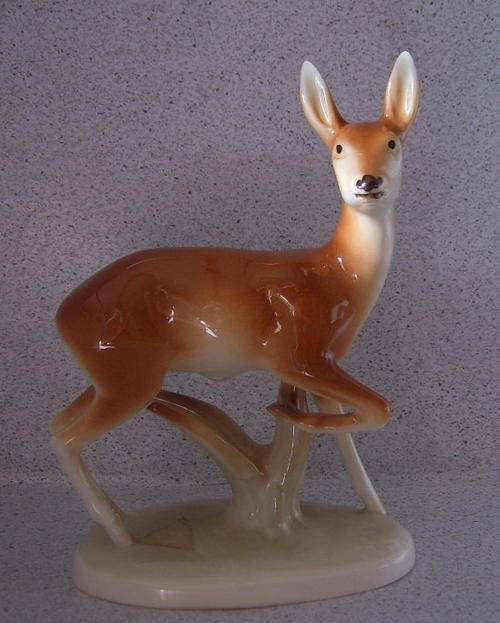
Royal Dux Figure of a deer
Check my rate
| Main centres: | 1-3 business days |
| Regional areas: | 3-4 business days |
| Remote areas: | 3-5 business days |

| Main centres: | 1-3 business days |
| Regional areas: | 3-4 business days |
| Remote areas: | 3-5 business days |
beautiful mint condition without any chips or cracks
Length: 10cm, Height: 13.5cm
fully backstamped
please look at the photos

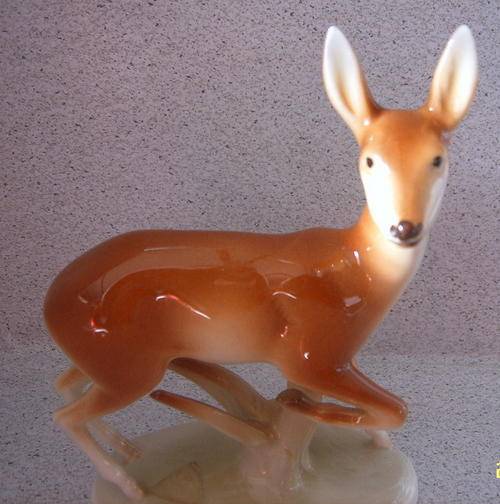
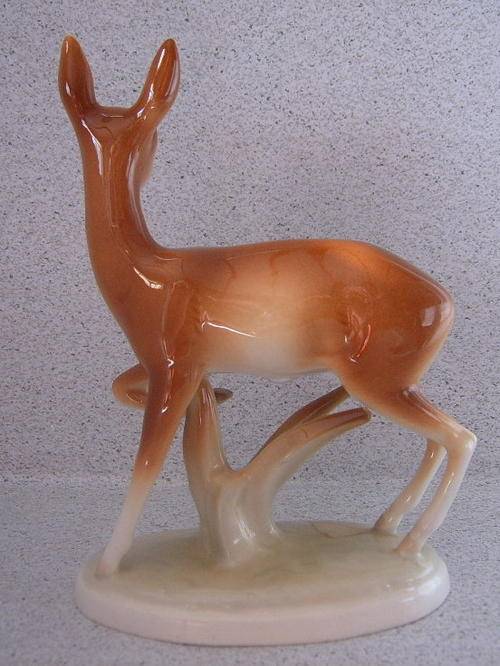
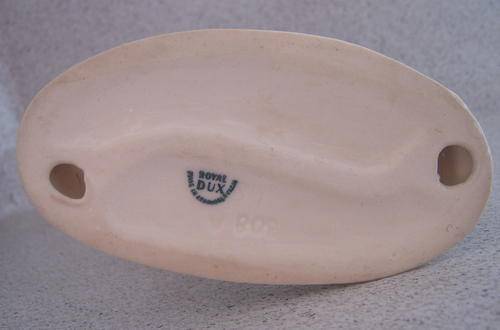
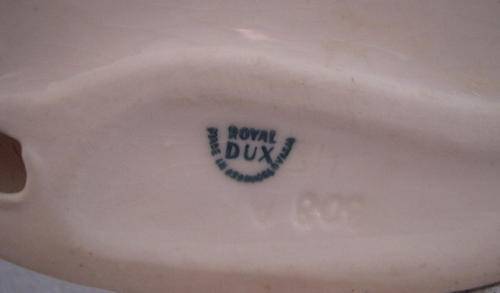
As the Fasold family had just died, the newly established 'Duxer Porzellanmanufaktur A.G.' bought the porcelain factory Porzellanfabrik Fasold & Eichel in Blankenhain (Thuringia) and at the same time liquidated their own facility in Šelty. The facility now started to produce porcelain, apart from the traditional products. In 1900, the well known mark was introduced in its basic form but at least three other marks exist as you can see in the 'Marks' section. The mark best known today shows a pink coloured triangle and the inscription 'ROYAL DUX BOHEMIA' around an acorn (derivated from the name Eichler, as 'Eichel' means 'acorn'). For the first years (until around 1918) the acorn had an 'E' for 'Eichler' in the middle, but it was later changed to a 'D' for 'Dux' whereas the 'M' can be found on items produced after 1953 when the company took over the former 'Porzellan- und Steinzeugfabirk Carl Spitz' (owned by Dr. Adolf Fischer) in the former town of Brüx which 1945 had been renamed to Most.
In the art nouveau period the company achieved a most remarkable success thanks to its modeller Alois Hampel. The factory was awarded the Grand Prix prize at the world exhibition in St. Louis in 1904, the silver medal at the exhibition in Milano in 1906 and the gold medal at the exhibition in Liberec. Some of the products introduced at that time are still produced up to this day.
At that point, the company employed 500 workers and the facility had five round kilns and seventeen muffle kilns as well as its own steam and power plant. Sample store-houses and representatives in Berlin, Hamburg, Vienna, London, Amsterdam, Bologna, Paris, Stockholm and Madrid were a solid base for international trade as the products were mainly exported and the company had trade connections with all Europe, Russia, and even North America.
This successful period was interrupted by the First World War. Because of the specific character of the produced goods, the pre-war standard of production could not be maintained. Due to enormous financial difficulties, the factory in Blankenhain had to be sold to the German Carstens family at the end of 1917.
In the period between the two World Wars the company did not succeed in achieving the same level of production as at the beginning of the century. The trade links had been destroyed during the war and could not be re-established and the necessary financial support for research and new designs was missing. When the world economic crisis broke out, the factory had to stop developing new lines. It was difficult enough to maintain the achieved standard. In spite of all these difficulties the company managed to preserve the character of its production. It continued to produce figurative and decorative porcelain based upon already existing successful and shapes.
After World War II, most of the workers with German nationality were evacuated and replaced by settlers from further inland. The factory established its own apprentice training center and the State School of Ceramics in Teplice was re-opened. The cooperation with the High Industrial School of Art in Prague also largely contributed to the further development and helped to retain the enormous scope of production.
Since the late fifties, the manufacture has slowly started to regain its lost position on the world market. The collection of Professor Jaroslav Jeek shown at the world exhibition EXPO '58 in Brussels largely contributed to its success. During the years, the product range was further extended by realistic figurative motives and other products that are renowed for their smooth stylized forms in modern spirit, both in figurative and decorative porcelain.
The variety and wide scope of the contemporary production program will please even the most demanding customer. The company strives to satisfy a maximum number of its customers by retaining a high artistic, aesthetic and technological standard of its production as depicted in the newer catalogs with figurative and decorative porcelain that is respected worldwide.




